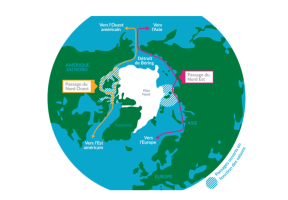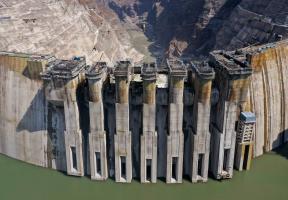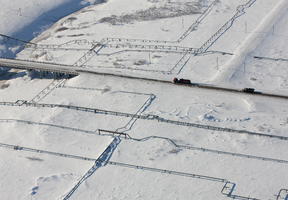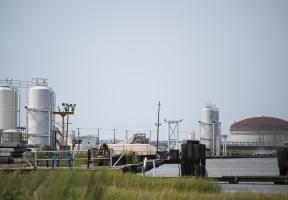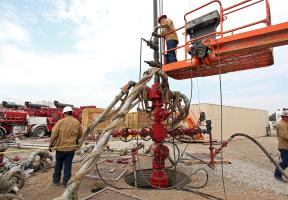Carbon Transport and Storage
10 min read
Once the carbon dioxide (CO2) has been captured, it must be transported to a permanent storage site then injected below the Earth's surface. Proper precautions need to be taken to ensure that the CO2 remains buried for thousands of years.
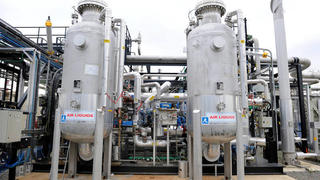
© DUFOUR MARCO / TotalEnergies - TotalEnergies conducted a carbon capture and storage pilot program for several years at its former Lacq gas facility in France. Shown here are two CO2 dryers.
Step 2: Transport the CO₂
Transporting CO2 is not technically complicated. It involves the same methods as for natural gas, which are generally well understood. There are two solutions:
- Pipelines: The CO2 is first compressed to a liquid-like state. This form of transportation is already used in the U.S., where a network of 4,000 kilometers of pipelines transports more than 40 million metric tons of CO2 every year.
- Road tankers or ships: The CO2 is transported in liquid form at a pressure of 15 bar and a temperature of -30°C.
It is important to bear in mind that transporting CO2 becomes unfeasible if the biggest emitters are located too far away from the storage sites.
Step 3: Store the CO₂
While some captured CO2 can be reused in the food and chemical industries, demand falls far short of what would be needed to effectively combat . That is why it must be stored in suitable sites.
Three storage solutions currently interest experts:
- Saline aquifers: The water found in deep aquifers is saline (i.e. contains salt), making it unsuitable for drinking, agricultural or industrial use. As the water is non-potable, deep aquifers are emerging as the most suitable solution for trapping CO2. These geological formations are found both on- and and can stretch over huge areas, offering enormous long-term storage capacities.
Indeed, it is currently thought that saline aquifers offer the greatest capacity, with the putting the figure at between 1,000 and 10,000 billion metric tons of CO2. Annual CO2 emissions from human activities, by comparison, amount to approximately 30 billion metric tons. To be useable, though, saline aquifers must be more than 800 meters below the Earth's surface and covered in layers of impermeable caprock strong enough to withstand the pressure of the gas for thousands of years. Consequently, the subsurface must undergo extensive testing.
It remains to be seen whether there is sufficient storage capacity of this kind in the regions of the world responsible for the most carbon emissions.
Depleted oil and gas reservoirs: History has already shown that these reservoirs can securely store oil and gas for millions of years. Reusing depleted oil and gas fields would also lower the cost of storing CO2. But their estimated capacity of less than 1,000 billion metric tons is a long way behind that of deep aquifers and they are not always close to sources of CO2 emissions.
into oil fields to enhance recovery: CO2 can be injected into oil deposits to enhance recovery, which offers the benefit of giving CO2 a commercial value. When considering greenhouse gas emissions, though, care should be taken to offset the stored carbon against the amount of CO2 emitted when processing or consuming the resulting oil. Despite the economic value this solution confers on CO2, it still falls largely short of meeting the challenges of climate change. Instead of being stored or recovered for oil production, can be used in different ways.


